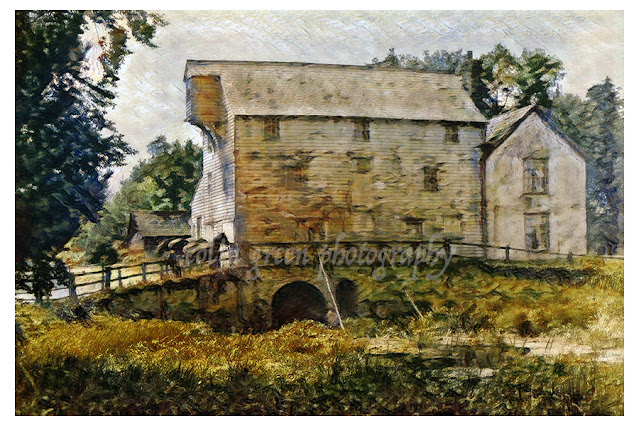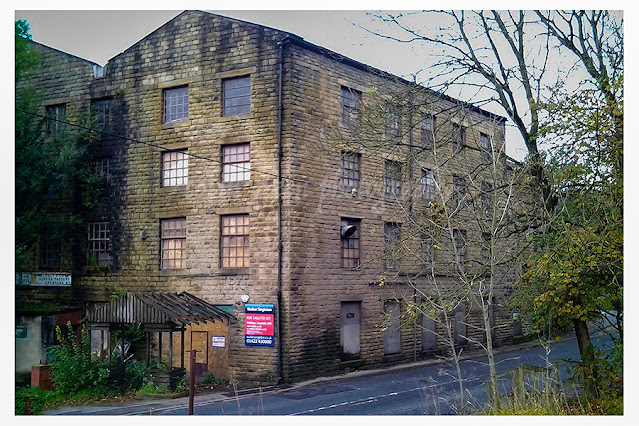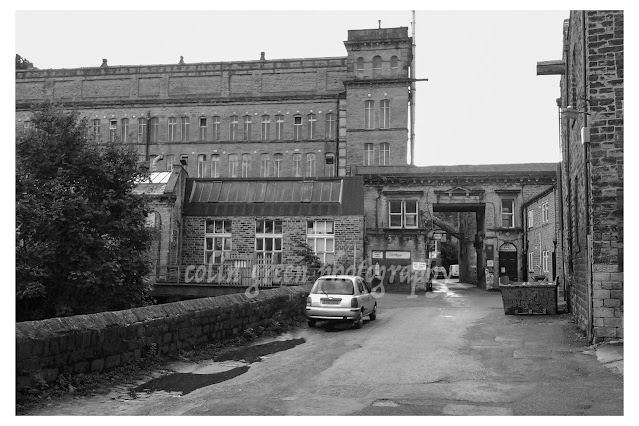River Calder at Copley is a set of 6 pictures taken in March 2015 on an approx 1 mile stretch of the river from Copley Valley to the Village. The area around the river Calder at Copley Valley has seen major development since these pictures were taken, with new housing on the north bank of the river, new industrial units on the south side of the river, and a new bridge and roads linking the 2.
The majority of the site used to be covered by Sterne Mills, and the former Sowerby Bridge Sewage Works which had been opened in 1896. A mill had been on the site of Sterne Mills since at least the 18th century, but by the turn of the Millennium the site was unoccupied after the Standard Wire Company had moved away. The opposite banks of the river were originally a fording point until a wooden bridge was constructed, this was replaced by a single track concrete structure in 1914, and again by the current crossing a few years ago. The only remains of Sterne Mills today are the weir that powered the mill, and a sluice gate near the weir.
The pictures below were taken on the 8th March 2015 with a Polaroid is2132 camera, they can also be seen on Clickasnap, un-watermarked.
The former sluice gate is all that remains of the mills that once occupied the site.
The weir and modern bridge crossing, the 1914 bridge abutment can just be seen before the metal banking, behind the watermarked col.
The river passing Copley Village, the stone wall to the pictures left is all the remains of Edward Akroyd's Copley Mill which was demolished in 1974, the site is now covered by housing.
This picture was taken from the side of Copley Playing fields looking towards the bridge and wier.
Taken from the south bank, this path used to pass Sowerby Bridge Sewage Works, the site is now occupied by industrial units. I was told once that the river used to be navigable past this point until the canal came and weirs were built to power the mills.
The river again pictured here to the west of Sterne Mills Bridge, the north bank pictured across the river is now covered by housing on what was once considered a flood plain. Just about visible through the trees is the Halifax Bank's Copley Data Centre, opened in the mid 1980's the centre is earmarked for complete closure in 2025.
Clicking any image should open a link in another window to the un-watermarked, higher resolution version on Clickasnap.
Thanks for looking, please take a moment to share and follow me on social media.
All the pictures remain the copyright of Colin Green.
 The front of the mill used to feature a bowling green where the cars were parked across the River Ryburn. The top of the building used to feature a WM Edlestons sign lit up in red.
The front of the mill used to feature a bowling green where the cars were parked across the River Ryburn. The top of the building used to feature a WM Edlestons sign lit up in red.










































